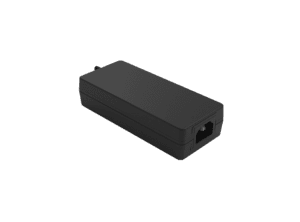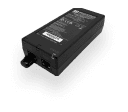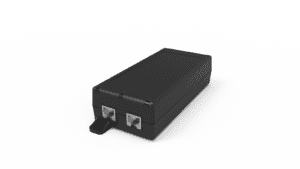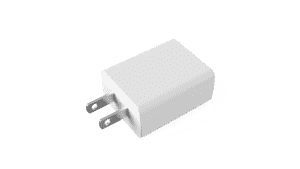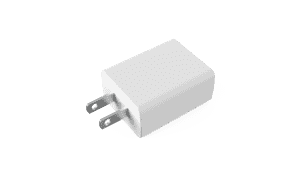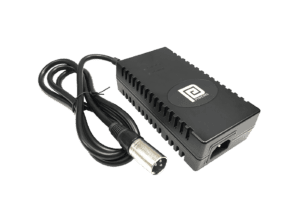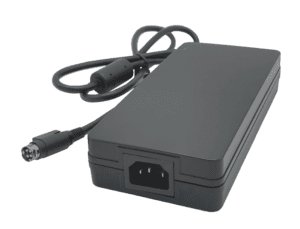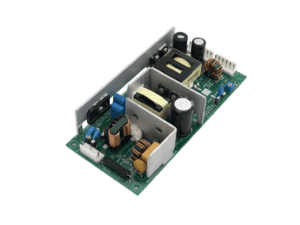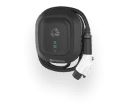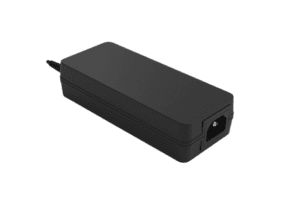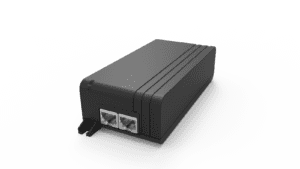BLOG
802.3af, at and bt: Exploring Active Power Over Ethernet IEEE Standards
Table of contents

IEEE standards 802.3af, at, and bt has emerged as a game-changer for the Power Over Ethernet (PoE) industry. The simple yet innovative technologies’ standardizations have solidified the technology as one of the safest and smartest innovations that has comes to light in these past few decades, expanding the reach of possibilities of all types of electronic devices in practically all industries.
In this article, we will discuss the significance of PoE and its standards, we will also discuss certifications and ratings involved in PoE. So, sit back and relax, and join us on this informative journey into the world of PoE.
What is Power Over Ethernet (PoE)?
PoE technology enables the use of a single Ethernet cable to transmit both data and electrical power to various devices like IP cameras, wireless access points (WAPs), and VoIP phones. This dual functionality eliminates the necessity for separate power adapters and electrical outlets, streamlining network setups and lowering the costs associated with wiring.
PoE is particularly advantageous in situations where devices are installed in hard-to-reach or remote locations, such as on ceilings, walls, or outdoors. By delivering power and data through a single cable, PoE simplifies installations and enhances flexibility. Furthermore, PoE supports centralized power management, allowing network administrators to easily monitor and control the power supply to connected devices, enhancing overall network reliability and efficiency.
In addition to reducing installation complexity and costs, PoE can also improve network scalability. As new devices are added to the network, PoE makes it easier to expand without the need for additional electrical infrastructure. This makes PoE an ideal solution for growing networks, supporting a wide range of applications in various environments, from small businesses to large enterprises.
What are the PoE Standards?
PoE standards outline how network cables can carry both electrical power and data. Established by the Institute of Electrical and Electronics Engineers (IEEE), these standards guide the development and application of electrotechnology. The main PoE standards in the industry are IEEE 802.3af (PoE), IEEE 802.3at (PoE+), and IEEE 802.3bt (PoE++). These guidelines detail power levels, wiring configurations, and other technical aspects to ensure the safe and efficient delivery of power over Ethernet cables.
IEEE 802.3af (PoE)
The first PoE standard, IEEE 802.3af, was introduced in 2003. Often called PoE, IEEE802.3af set the benchmark for delivering 15.4 watts from the Power Sourcing Equipment (PSE) and 12.95 watts at the Powered Device (PD) using 44-57 volts of DC power over Cat5 Ethernet cables. Initially used for VoIP (Voice over IP), it soon expanded to wireless access points (WAPs) and low-power surveillance cameras. This standard ensures interoperability among devices from different manufacturers, providing a reliable solution for powering network devices.
Power Delivery:
- Voltage Range: 44-57DC.
- Max Power: 15.4W at PSE / 12.95W at PD.
- Current: Up to 350mA.
Cable and Pin Configuration:
- Cabling: Cat5 or higher but depends on the data speed as well.
- Pin Pairs: Power can be delivered over either the data pairs (1, 2, and 3, 6) or the spare pairs (4, 5 and 7, 8).
Detection and Classification:
- Detection: The PSE detects a PD by applying a small voltage and looking for a characteristic signature resistance (25k ohms).
- Classification: Optional, allows PDs to indicate their power requirements (Class 0-3).
IEEE 802.3af laid the groundwork for PoE, enabling the deployment of low-power devices without the need for separate power supplies.
IEEE 802.3at (PoE+)
In 2009, as the demand for higher power grew, the IEEE released the 802.3at standard, known as PoE+, enhancing the original PoE standard by increasing the power delivery capacity to 30 watts from the PSE and 25.5 watts at the PD over Cat5 cables. This upgrade supports higher-power devices like PTZ cameras, high-speed wireless access points (WAPs), and video IP phones. PoE+ maintains backward compatibility with IEEE 802.3af, allowing it to power older devices while providing additional power for newer, more demanding equipment.
Power Delivery:
- Voltage Range: 50-57V DC.
- Max Power: 30W at PSE / 25.5W at PD.
- Current: Up to 600mA.
Cable and Pin Configuration:
- Cabling: Cat5 or higher but depends on the data speed as well.
- Pin Pairs: Similar to 802.3af, but with more stringent requirements on the cable’s current handling capacity.
Detection and Classification:
- Detection: Similar mechanism to 802.3af.
- Classification: Enhanced with additional classes (Class 4) to better match PD power requirements.
PoE+ enabled a broader range of devices, including PTZ cameras and higher-performance wireless access points (WAPs), to be powered over Ethernet.
IEEE 802.3bt (PoE++)
To meet the demand for even more power, the IEEE introduced the 802.3bt standard in 2018, known as Hi-PoE or PoE++. This standard delivers between 60 and 90 watts from a PSE and is backward compatible with both IEEE 802.3af and IEEE 802.3at. It supports devices requiring between 51 and 71.3 watts, making it ideal for high-power applications like digital signage, LED lighting, and advanced wireless access points (WAPs). This standard supports two power levels: Type 3 and Type 4.
Type 3 (60W PoE)
Power Delivery:
- Voltage Range: 50-57V DC.
- Maximum Power: 60W at PSE / 51W at PD.
- Current: Up to 600mA per pair.
Cable and Pin Configuration:
- Cabling: Cat5e or higher but depends on the data speed as well.
- Pin Pairs: Utilizes all four pairs in the Ethernet cable for power delivery.
Detection and Classification:
- Detection: Enhanced detection mechanisms to support higher power.
- Classification: Extended with additional classes (Class 5-6) for better power management.
Type 4 (90W PoE)
Power Delivery:
- Voltage Range: 52-57V DC.
- Maximum Power: 90W at the PSE, 71.3W available at the PD.
- Current: Up to 960mA per pair.
Cable and Pin Configuration:
- Cabling: Cat6a or higher but depends on the data speed as well.
- Pin Pairs: All four pairs are used, similar to Type 3.
Detection and Classification:
- Detection: Further enhanced to prevent overloading and ensure safe operation.
- Classification: Includes higher classes (Class 7-8) to accommodate a wide range of high-power devices.
How do PoE Standards 802.3af, at, and bt Enhance PoE Efficiency?
The IEEE standards 802.3af, 802.3at, and 802.3bt enhance PoE efficiency in several ways:
Improved Power Delivery: Each successive standard increases the amount of power that can be delivered to devices. This allows for the support of more power-hungry devices and reduces the need for additional power sources.
Enhanced Compatibility: The standards ensure that PoE devices from different manufacturers can work together seamlessly. This interoperability is essential for creating flexible and scalable network installations.
Optimized Power Management: IEEE 802.3at and 802.3bt standards include features for more efficient power management, such as dynamic power allocation and improved power negotiation. These features help minimize power wastage and ensure that devices receive the appropriate amount of power.
Extended Range and Reliability: The standards define the maximum cable lengths and performance characteristics for PoE systems. By adhering to these specifications, PoE installations can achieve reliable performance, reducing the risk of power loss and data degradation.
Which Devices Benefit Most from IEEE 802.3af, at, and bt?
The benefits of IEEE 802.3af, 802.3at, and 802.3bt standards vary depending on the type of device.
IEEE 802.3af (PoE)
Ideal for devices with lower power needs, IEEE 802.3af provides a maximum power output of 15.4W per port and can easily handle these types of devices:
IP Cameras: Standard-definition and many high-definition IP cameras.
VoIP Phones: Basic and some advanced VoIP phones.
Wireless Access Points (WAPs): Basic and mid-range wireless Aps.
Network Switches: Some basic network switches with PoE support.
Access Control Devices: Basic door access systems.
IEEE 802.3at (PoE+)
Ideal for devices that are more power-hungry, with a power delivery of up to 30W, IEEE 802.3at can power-up these devices:
Advanced IP Cameras: High-def 4K IP cameras with pan-tilt-zoom (PTZ) capabilities.
Advanced VoIP Phones: Advanced VoIP phones with additional features
Wireless Access Points (WAPs): High-performance and dual-band wireless APs
Network Switches: Managed switches with PoE+ capabilities
Digital Signage: Small to medium-sized digital signage displays
PoE-Enabled LED Lighting: High-power LED lighting systems
IEEE 802.3bt (PoE++)
Type 3 Benefits high-power devices that require up to 60W per PoE port, while Type 4 offers a maximum power output of 90W per PoE port, here are the compatible devices:
IP Cameras: PTZ, High-definition, 4K, and ultra-high-definition IP cameras
VoIP Phones: Advanced VoIP phones with additional capabilities
Wireless Access Points (WAPs): High-performance, multi-gigabit wireless APs
Digital Signage: Large digital signage displays and interactive screens
PoE-Enabled LED Lighting: High-power, high-efficiency LED lighting systems
Point of Sale (POS) Systems: Advanced POS terminals requiring higher power
Thin Clients and Terminals: Devices that need higher power for full functionality”
What Makes Phihong the Top Choice for PoE?
When it comes to PoE injectors and customized solutions, Phihong emerges as a standout choice for several compelling reasons. Moreover, let’s delve into what sets Phihong apart as a leader in the PoE industry.
Driving Innovation and Setting Standards
Phihong has been a trailblazer in PoE innovation, consistently pushing the boundaries of technology and actively shaping industry standards. Moreover, as the sole power supply manufacturer on the IEEE PoE committees, Phihong plays a crucial role in advancing PoE standards, from contributing to AT/BT standards to influencing IEEE PoE discussions. This involvement positions Phihong as the preferred supplier and manufacturer for OEMs seeking cutting-edge PoE solutions.
Unrivaled Dependability
At Phihong, reliability is paramount. Therefore, every product undergoes rigorous testing and quality control measures to ensure flawless performance, even in the most demanding environments. By choosing Phihong, you are trusting in stable and efficient network infrastructure, thus minimizing downtime and maintenance costs.
Local Expertise for U.S. Businesses
For U.S.-based OEMs seeking tailored PoE solutions, Phihong offers distinct advantages:
Firstly, Strategic Location: Based in the heart of Silicon Valley, our proximity to tech giants ensures swift logistics and timely delivery of products.
Secondly, Local R&D Facilities: Our on-site research and development capabilities enable rapid innovation and customization to meet the specific needs of American OEMs, fostering close collaboration and efficient product development.
Lastly, Dedicated U.S. Support: With a focus on customer satisfaction, Phihong provides responsive U.S.-based customer support. Our engineers offer timely assistance, technical expertise, and troubleshooting, ensuring a seamless experience for our clients.
CLIENT'S QUOTE
Phihong's Power-Over-Ethernet solutions have transformed our network, boosting efficiency and reducing costs. Their seamless integration has simplified both installation and maintenance.

Contact Our Team Today!
Our dedicated sales team and international partners are prepared to support you with your latest projects and initiatives globally.
Explore More with Phihong USA
As we conclude our exploration of PoE technology, it’s clear that this field is experiencing unprecedented growth. For over 50 years, Phihong has been at the forefront of innovation, serving Fortune 500 companies across various industries as a leading power supply manufacturer for OEMs.
Phihong’s leadership, particularly in advanced technologies like Power over Ethernet, extends to active contributions in the development of IEEE PoE standards. This involvement underscores our commitment to innovation and dedication to providing cutting-edge power solutions that will shape the future of technology.
In addition to custom power supply solutions, Phihong offers a diverse range of products, including:
- Power over Ethernet (PoE) Solutions: PoE injectors, splitters, media converters, and more
- AC/DC Adapters and Power Supplies: USB adapters, desktop adapters, industrial-grade power supplies, and more
- Battery Chargers: Chargers for lithium-ion and lead-acid batteries
- Medical Power Supplies: Specialized power supplies that meet stringent healthcare requirements
By partnering with Phihong USA, you are choosing a trailblazer in power technology. If you’re an OEM looking for a custom PoE solution or just looking for a quality product, call us today: 510-445-0100 or email us at usasales@phihongusa.com. We look forward to collaborating with you.

